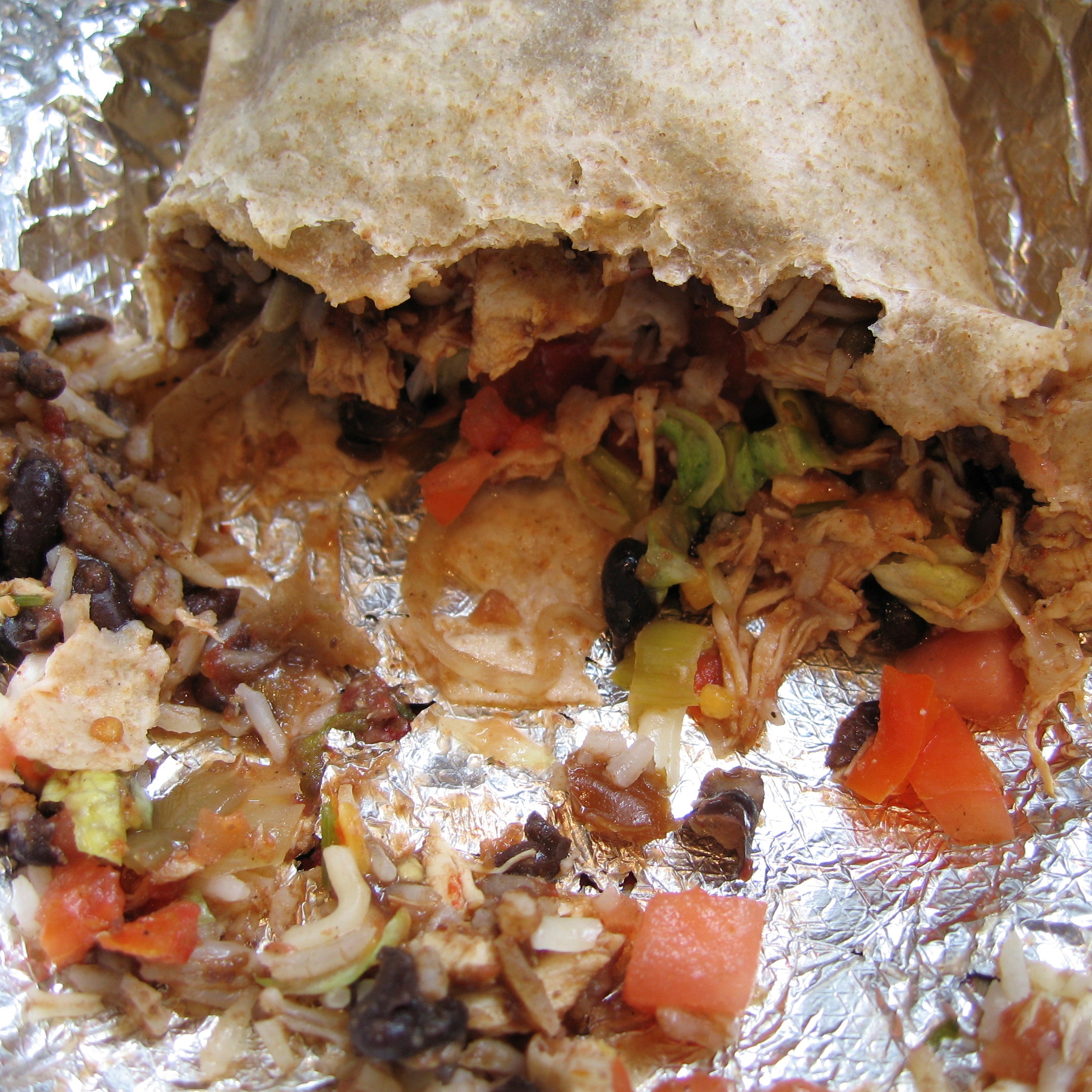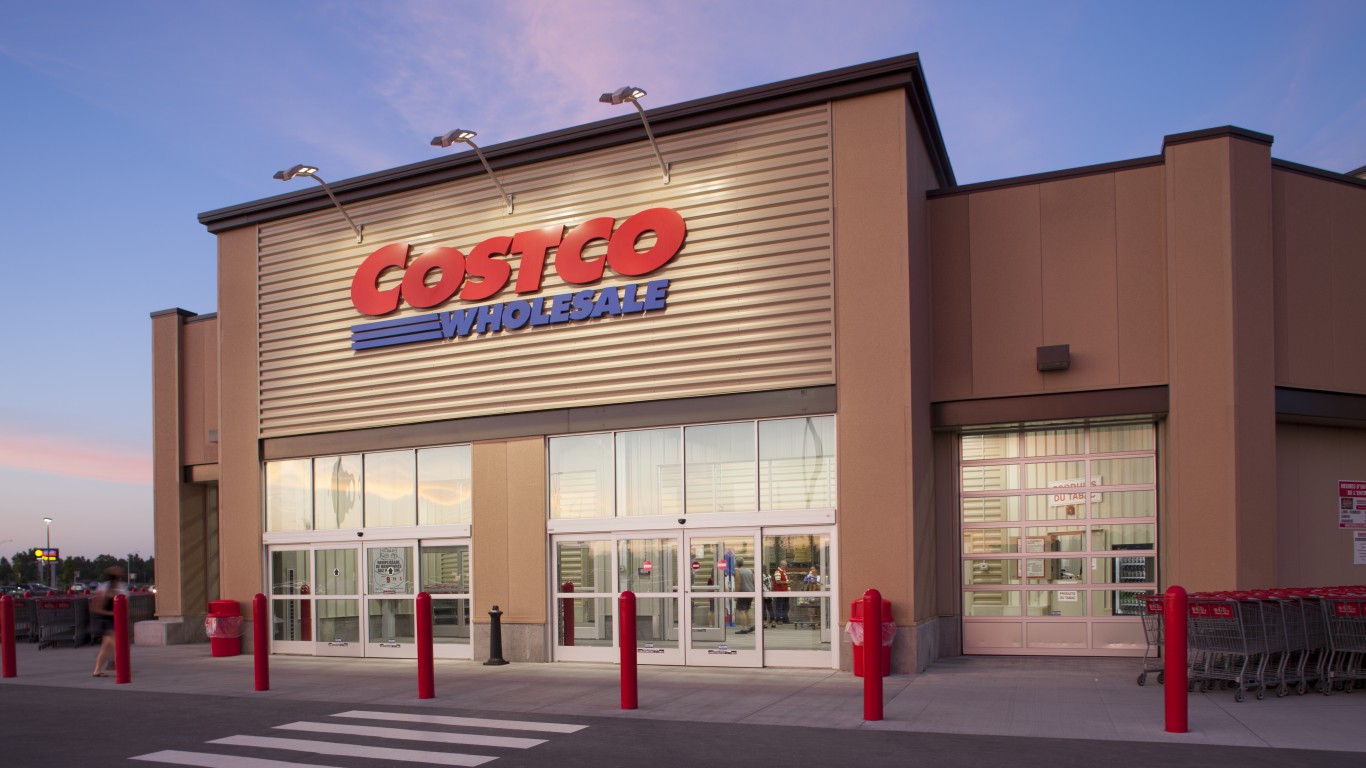
Chipotle Mexican Grill Inc. (NYSE: CMG) has been one of the greatest restaurant stock stories of the past decade. It is also one of the top destinations to eat. Unfortunately, Chipotle seems to be suffering from some of the same issues now that mature restaurant chains suffer from. If things do not get righted soon, Chipotle’s shares could easily be overvalued by about $200 or more.
News broke this last weekend that Chipotle is being probed in Oregon and Washington for an E. coli outbreak that has hit 22 people in the area. Investors and Chipotle consumers do not need to worry that this will mark the end of Chipotle at all. That being said, Chipotle is at a crossroads in 2015 where high valuations and growing pains may be larger than they seem.
The good news is that this is not set in stone. Chipotle can recover. The bad news is that Chipotle’s shareholders have to be considering some serious valuation risks ahead.
It was not that long ago that Chipotle was voted as one of the top destinations for couples to go out on a date, even a first date. But Chipotle’s growing pains are starting to sound like they come with the hallmarks of all other restaurant chains after they reach a certain size. As a reminder, Chipotle was spun out of McDonald’s Corp. (NYSE: MCD) in the prior decade (2006).
Chipotle recently had to stop selling carnitas at one-third of its restaurants after reports of an audit identified that one its food suppliers was not complying with Chipotle’s standards on animal welfare. Chipotle also has been attacked recently over GMO food claims and that some of Chipotle’s cooking is outsourced to a company that also makes McNuggets and McRibs. Then there is also the grass-fed beef issue from Australia and use of trans fats, per a BuzzFeed report this summer.
ALSO READ: 10 Brands That Will Disappear in 2016
So, while this is obviously not the death of Chipotle, that does not at all mean that investors better be more concerned than diners. Chipotle shares were right at $640 before the news broke, the stock fell to $624 on Monday and was back up to $629 on Tuesday. It is one thing that a Chipotle diner can spend less than $10 at a meal, but another thing that the price of one single share of stock represents a whopping 63 or more meals at $10.
Chipotle’s stock price of $640 prior to the E. coli news was against a 52-week range of $597.33 to $758.61. After a pullback of that magnitude, Chipotle’s consensus analyst price target of was $757.22, and that target is down less than $1.00 so far. That just feels too high for the pullback we have seen and for the issues that Chipotle faces today. We are also concerned about its growth rates, and that comes with supply chain issues ahead. Some companies can keep up with their growth, but suppliers and availability of high-quality products can be a different issue entirely.
Chipotle’s market cap is also right under $20 billion, even after the pullback that has been seen from the 52-week high. That would represent about four times a blended 2014 to 2015 annualized revenue expectation.
Then the $640 share price before the news represents a P/E ratio valuation of 37 for 2015 expectations and 31 for 2016 expectations. That isn’t exactly cheap for a stock market that is trying to decide if the S&P 500 should trade at 15 times or 17 times expected earnings.
ALSO READ: The 10 Most Profitable Companies in the World
Then there is a five-year chart review. A five-year chart may seem unfair for a growth story, but long-term investors will want a long-term picture here if the valuation comes into play. It was in April of 2012 that Chipotle shares peaked at $440.00 or so, and it took until October 2013 for Chipotle to break above that figure again — and it was one impressive breakout. If Chipotle shares do not hold above $600, technicians can argue that there is nothing but dead-air down to $540 at the first stop and $500 at the next stop. After that, $440 could come back into play.
Now consider what $440 would mean on a valuation basis. With a 2016 estimate of about $20.50 in earnings per share would represent 21.5 times the “then current” earnings. That still isn’t dirt cheap but is much more realistic with a slower global and U.S. gross domestic product story.
Now look at Chipotle’s store count today versus the past. This is where things may get very complicated for Chipotle. It has so far opened 150 new restaurants during the first nine months of 2015, bringing its total restaurant count to 1,931. Guidance for 2015 was recently increased to a new store count of 215 to 225, and it sees another 220 to 235 new restaurant openings for 2016.
ALSO READ: 4 Non-Energy Stocks That Could Be Cut in Half by Year End
Now let’s look back in time and see how much more complicated its structure is becoming than years past. At the end of 2005, it had 481 restaurants and had eight restaurants operated by franchisees. At the end of 2010 it operated 1,084 restaurants. And more recently, according to its annual reports:
- As of December 31, 2012, we operated 1,410 restaurants, including Chipotle restaurants throughout the United States, as well as five in Canada, five in London, England, and one in Paris, France, and also one ShopHouse Southeast Asian Kitchen, a restaurant in Washington, D.C. serving Asian-inspired cuisine.
- As of December 31, 2013, we operated 1,572 Chipotle restaurants throughout the United States, as well as seven in Canada, six in England, two in France, and one in Germany. Additionally, our restaurants include six ShopHouse Southeast Asian Kitchen restaurants, serving Asian-inspired cuisine, and we are an investor in a consolidated entity that owns and operates one Pizzeria Locale, a fast casual pizza concept, resulting in a total of 1,595 restaurants as of December 31, 2013.
- of December 31, 2014, we operated 1,755 Chipotle restaurants throughout the United States, as well as seven in Canada, six in England, three in France, and one in Germany. Additionally, our restaurants include nine ShopHouse Southeast Asian Kitchen restaurants, serving Asian-inspired cuisine, and we are an investor in a consolidated entity that owns and operates two Pizzeria Locale restaurants, a fast casual pizza concept, resulting in a total of 1,783 restaurants as of December 31, 2014.
It remains undeniable that Chipotle has been a great growth story. Unfortunately, this is an example of what can happen when great growth stories start to mature into large-cap companies in which investors still expect strong growth when customers still expect no change in the quality and service they are used to.
Chipotle also will run into the same wage pressures as other companies. If the wage pressure and the fight for that $15 per hour becomes the norm, there will simply be no place to hide in the restaurant and retail sectors. Pressure against McDonald’s cannot remain localized if it gathers more steam — just ask Wal-Mart.
The last consideration would be that earnings surprises are becoming harder and harder to come by. Chipotle had a negative surprise on earnings in the most recent quarter, and the surprise in two of the three prior quarters was too small to even count.
ALSO READ: The Most Popular Brand in Each State
Chipotle’s stock and valuation may be at a crossroads here. A drop of $200 more per share may sound harsh considering that it is almost one-third of the value today. This verdict is far from being set in stone. That being said, a drop of that magnitude now seems more possible — perhaps more than ever.
100 Million Americans Are Missing This Crucial Retirement Tool
The thought of burdening your family with a financial disaster is most Americans’ nightmare. However, recent studies show that over 100 million Americans still don’t have proper life insurance in the event they pass away.
Life insurance can bring peace of mind – ensuring your loved ones are safeguarded against unforeseen expenses and debts. With premiums often lower than expected and a variety of plans tailored to different life stages and health conditions, securing a policy is more accessible than ever.
A quick, no-obligation quote can provide valuable insight into what’s available and what might best suit your family’s needs. Life insurance is a simple step you can take today to help secure peace of mind for your loved ones tomorrow.
Click here to learn how to get a quote in just a few minutes.
Thank you for reading! Have some feedback for us?
Contact the 24/7 Wall St. editorial team.

